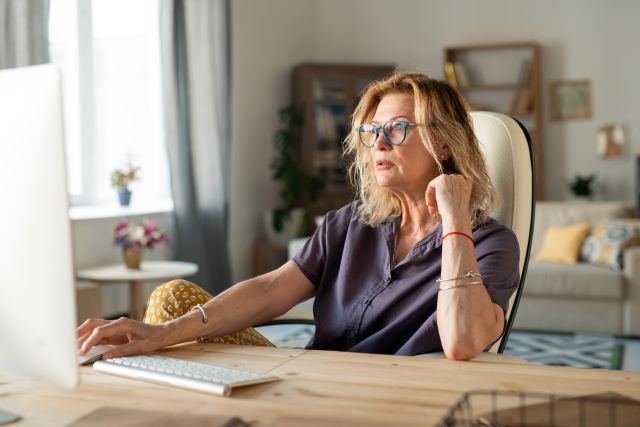Updated on November 21, 2023.
Has this ever happened to you? After toiling away at the computer all day or sitting for hours in traffic, you go to stand up and pain shoots up your leg. Could it be a charley horse? Maybe. But it could also be something much more serious: a blood clot.
It's well-known that being physically inactive can contribute to poor health. Sitting for long periods of time has been linked to heart disease, cancer, obesity, and overall early death. Add blood clots to that list.
The dangers of sitting
When you sit too long, your circulation slows down and your blood pools in the legs, making it more likely for the blood to stick together and form a clot.
“I’ve seen people who have sat at a desk and had major clots develop from not getting up. Prolonged sitting and long flights, those are definitely risks,” says Irving David, MD, a cardiovascular and thoracic surgeon in Fort Lauderdale, Florida. “Laying in bed because you’re ill, wearing a cast because of a fracture, whatever prolongs immobility and prevents you from exercising is going to be a risk.”
One of the scary things about blood clots is that they may or may not be painful.
“They can be anywhere from excruciatingly painful to painless,” says Dr. David. “A blood clot in the coronary artery can cause a heart attack. That’s painful. A clot in the leg, causing phlebitis, that’s painful. A blood clot in the brain can cause a stroke but may not be painful.”
How blood clots form
Blood clotting is an essential process of your body; it ensures you don’t bleed to death every time you get a cut. The process is known as coagulation. Normally, some stimulus like a wound or a cut will kick off a chemical reaction called the “clotting cascade.” The blood forms a clot and stops the bleeding.
“Clots inside the blood vessels are more dangerous,” says David. Clots in a vein or an artery have the potential to slow or stop blood flow in the vessel. These clots may also break apart, and when they do, pieces may travel through the bloodstream and cause trouble in other parts of the body, like the brain, heart, or lungs.
A serious complication
One of the most serious complications from sitting too long is a pulmonary embolism, when a blood clot travels through a vein and blocks blood flow to the lungs. Pulmonary embolisms often result from a condition known as deep vein thrombosis (DVT), which is a blood clot in a vein deep in the body, usually the legs.
“If the clot’s in a vein, it can travel to the lungs and interrupt the exchange of carbon dioxide and oxygen,” says David. Not only can this damage the lungs, but it can also damage other organs if the blood that feeds them doesn’t have enough oxygen.
A 2011 study published in BMJ involving nearly 70,000 female nurses showed that the women who sat the most (more than 41 hours per week) had more than twice the risk of developing a pulmonary embolism than women who sat the least (less than 10 hours per week).
Risks and symptoms
Besides sitting for too long, other blood clot risk factors include:
- Being over 60 years of age
- Having obesity
- Using birth control or hormone replacement therapy containing estrogen
- Smoking
- Experiencing damage to blood vessels
Blood clot symptoms may include leg swelling and/or pain and warm or discolored skin.
Call your healthcare provider (HCP) if you have any of these symptoms combined with one or more risk factors.
If the clot isn’t life threatening, your HCP will probably give you a prescription for anticoagulant medication to help keep your blood vessels clear. In an emergency, thrombolytics, also known as clot busters, will be given to break down the clot. But because they have the potential to cause excessive bleeding, they’re usually only used in emergencies.
Keep moving
The best way to prevent potentially dangerous blood clots is to keep moving. Get up at least every 30 minutes if you work at a desk. Grab a cup of coffee or water, use the restroom, walk up and down the stairs, or go say hello to a coworker on the other side of the office.
“Once you have a problem, use the three Es: elevation, elastic, and exercise,” says David. “Raise your legs above your heart a few times a day. Wear elastic stockings so the blood gets squeezed uphill and doesn’t pool in your lower legs. And, exercise. Even just pumping your calf muscles increases circulation.”







